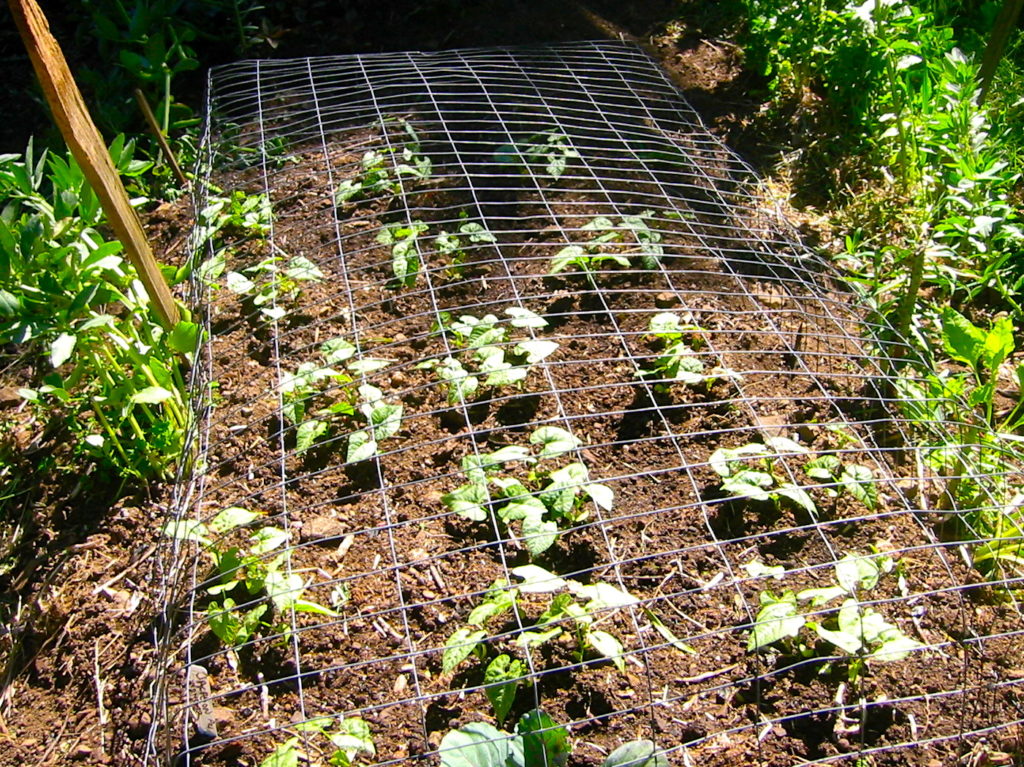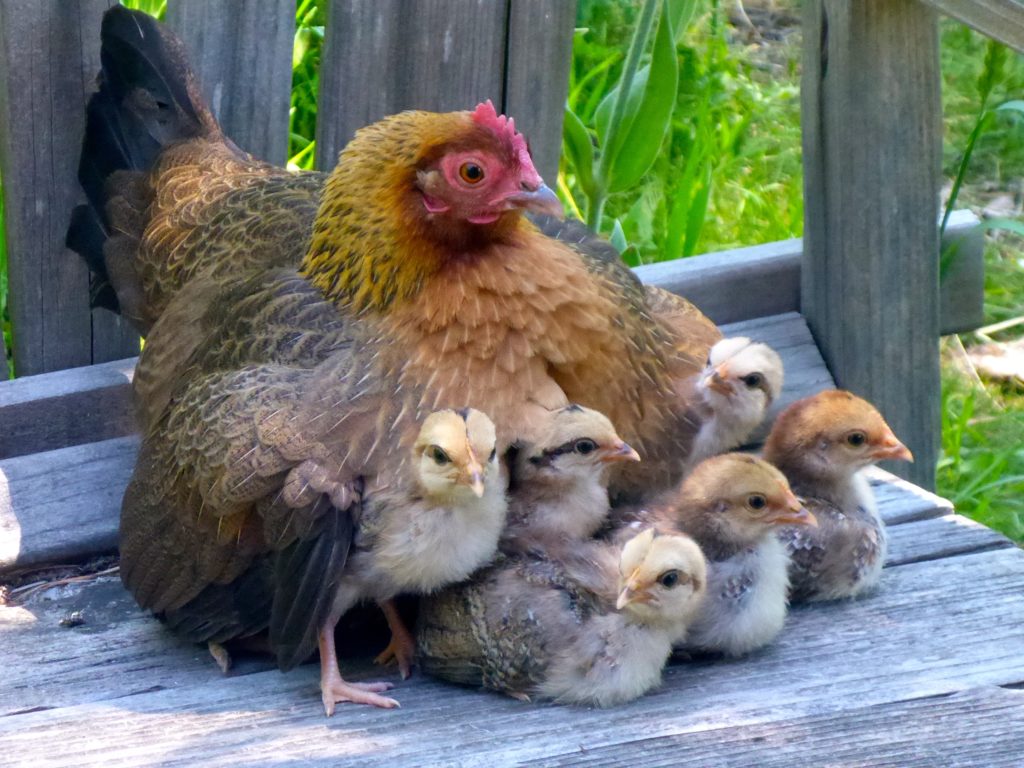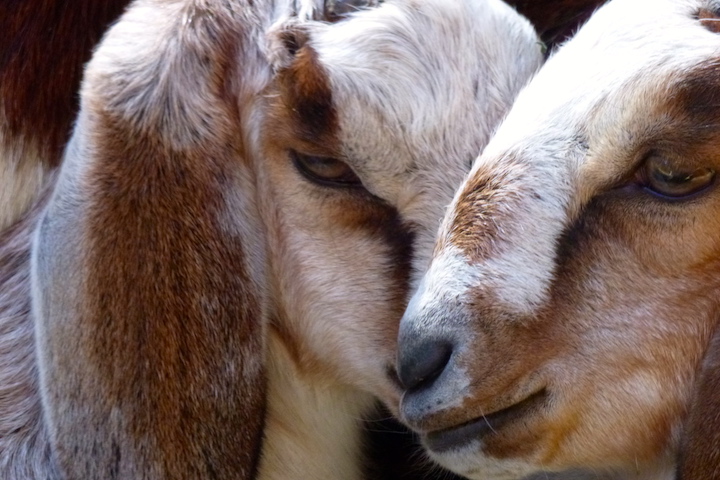The Garden takes a lot of work,
but it is not a hardship.
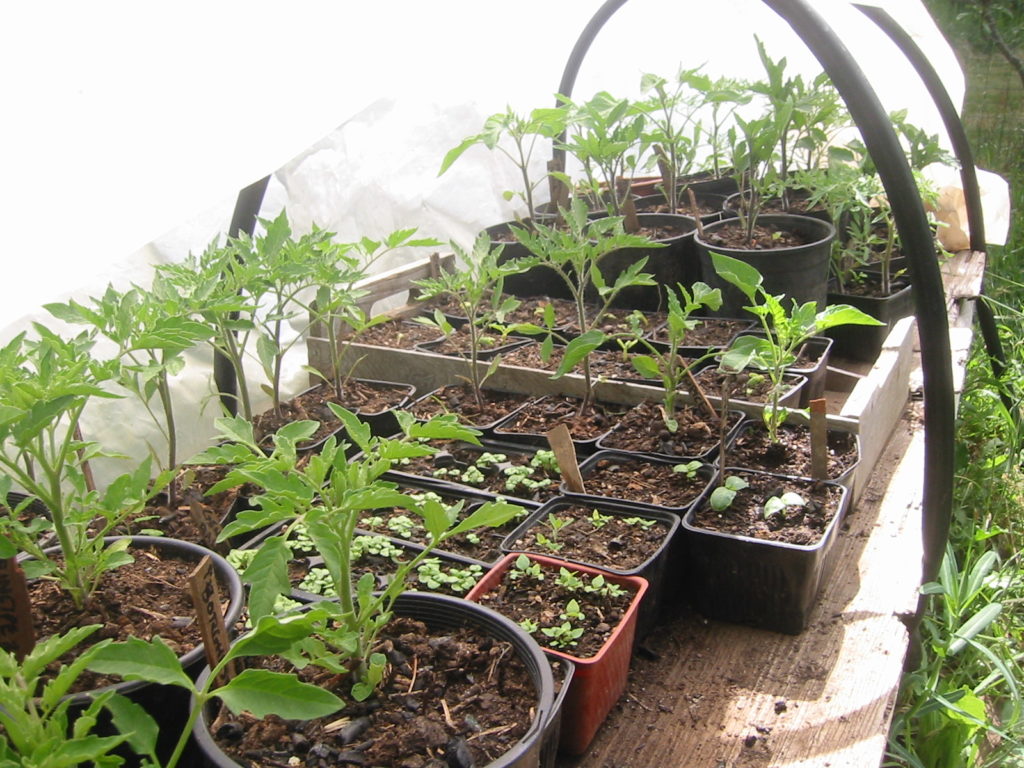
Tending growing plants is a joy. But defending them from predators can be a challenge. With our first small gardens, things went well, we did learn early on that anything accessible to Deer was going to get nibbled down – A good fence is a necessary item. insects didn’t seem to be that much of a problem until our work resulted in a large moist, nutrient rich, complex biological habitat. It roars with life, insects beneficial and otherwise congregate en masse.
Slugs can be a big problem, mice, moles, gophers, and voles are in a class by themselves; the bane of the would be farmer. It is hard to justify slaughter to solve the problem, the only practical alternative is to work around them. For me, that has meant barriers.
The method I have settled on is to create a cage of 1/2 inch galvanized steel hardware cloth embedded in the soil anywhere I want to grow high value, especially vulnerable crops, such as; carrots, beets, onions, garlic, potatoes, peas. And, lots of over planting to withstand the inevitable loss. It is heartbreaking to see a large maturing plant disappear over night, the loss is only partly mitigated by the Russian roulette of plants selected by the underground hordes. I am not certain it works but the other tactic I use is harassment. I have taken to using cayenne powder, or crumbled peppers sprinkled liberally in transplant holes. I figure it has got to be annoying, and I make wind spinners that give blustery evenings a spooky sound scape of tones and squeals transmitted to the ground by their mounting posts. A pair of hunting cats with a little back-up from the dog has slowed predation of plants considerably.
Most everything I plant is started in pots or flats. This allows for easier protection of vulnerable starts, earlier germination, and control of plant spacing. Starting seeds before the planting beds are prepared is possible, and timing is more adaptable with a nursery of available specimens at the ready.
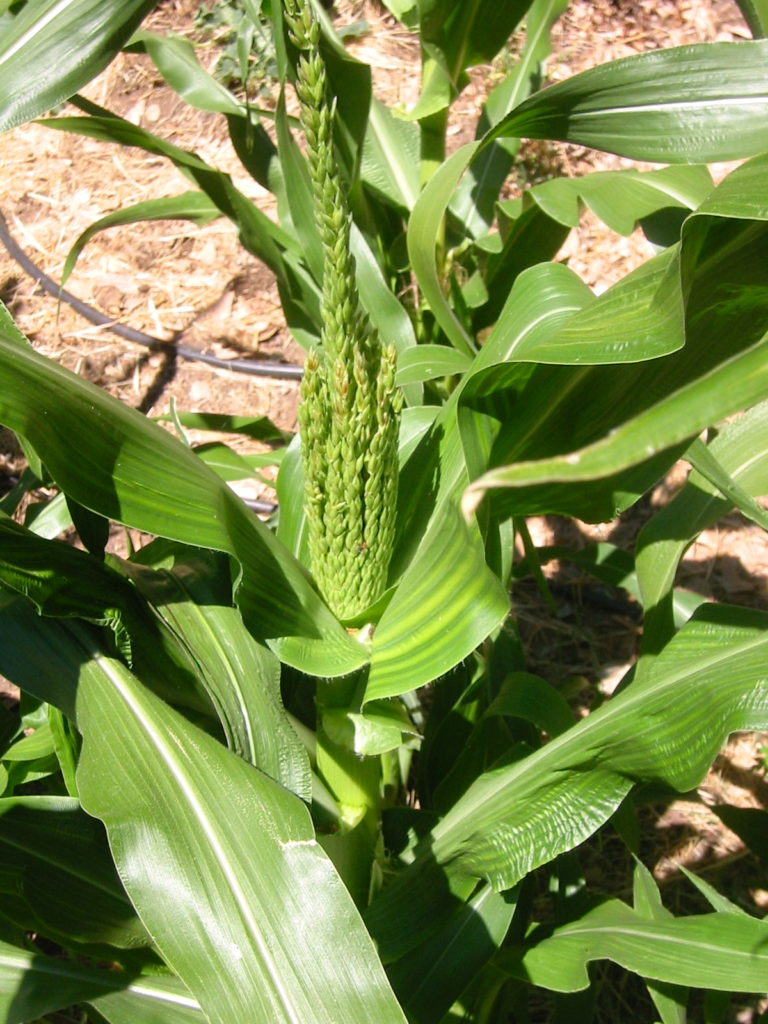
Attacks from above are in the form of foraging birds, slugs, and in the last few years rabbits.
Small birds especially early and late in the season will destroy seedlings either by scratching the soil or directly eating tender shoots. Then there are the wild turkey’s. Although it is nice to have them passing through, when they linger, can do a lot of damage. They love large crisp leaves of the brassica family and can strip a plant pretty quickly. our 6 foot fence is no barrier to a wing assisted hop and jump, so our main defense is to discourage their presence in the garden with the dog being allowed the sport of barking and chasing them into a low flight over the fence, and for young plants, covering them with turkey/rabbit resistant cages for those early morning assaults. Juggling the cages between beds minimizes the size of the fleet needed, but collecting hardware cloth armored beds is on going, the 19 gauge wire seems to last for many years, none has rusted yet.
Small slugs love the wild nature of the garden, with its abundant habitat, without early controls, they soon overwhelm, and become quite a pest. After years of picking them for the chickens, baiting them with beer, and protecting plants with sprinkled ash, all with limited impact, a new product hit the market- sold as Sluggo, or Escargo, a pelletized form of iron phosphate, a fairly benign plant nutrient with organic certification. Apparently it causes digestive problems, and becomes their last meal, though the vision of the fairly amazing, innocent mollusks quietly holed up, dying of constipation, or starvation, is not pleasant, I have been pleased with the results of a modest use in early spring, applying it at likely areas of congregation and breeding, and around vulnerable new plantings early in the season seems to reset the population to a manageable load.
The latest slug intervention has been a growing flock of free ranging Bantam Chickens. Their smaller stature make their foraging less intrusive to established plantings, but has created a new challenge for seedlings.
